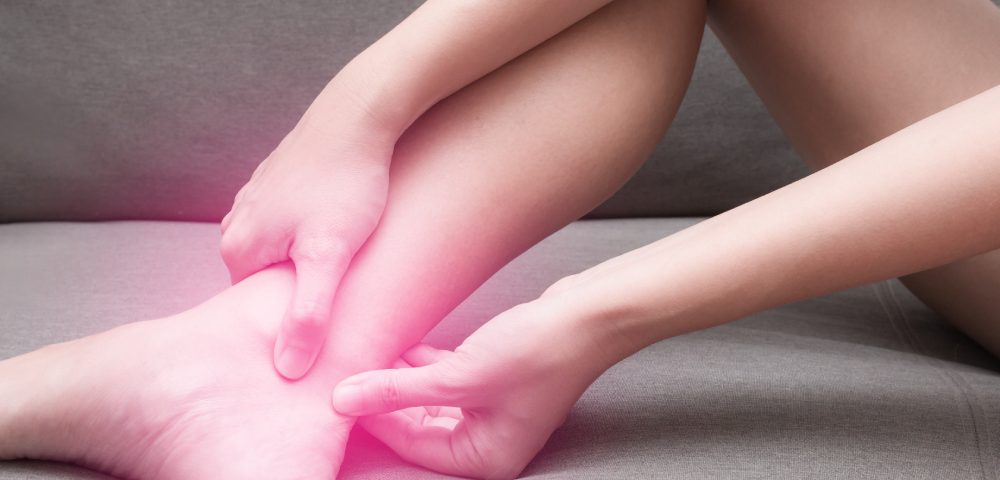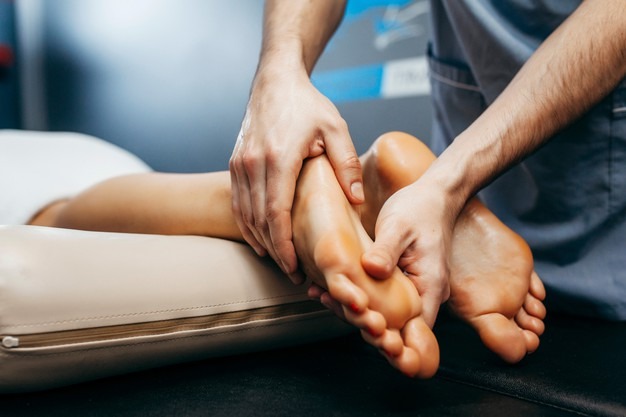- Have any questions?
- +91-9811443717
- info@dranujchawla.com
What is Achilles Tendonitis? How it is treated?

5 Minutes Routine For Healthy Achilles Tendons
January 21, 2021
Everything about Achilles Tendon Rupture
February 8, 2021What is Achilles Tendonitis? How it is treated?

Our foot is one of the most crucial organs that facilitate us to achieve mobility. Imagine catching your bus to commute to the office or driving your car with foot pain. The thought of this situation can lead to the occurrence of goosebumps and extreme pain.
Our foot is a complex structure consisting of bones, joints, muscles, tendons, and tissues. This tiny structure can withstand the pressure of our entire body and can be divided into three different sections- forefoot, midfoot, and hindfoot. The forefoot constitutes of toes and metatarsals. The midfoot is a pyramid-like structure that forms the arch of the foot and consists of cuneiform, cuboid, and navicular bones. The heel and ankle form the hindfoot. There are many muscles, tendons, and tissues present in the foot that enables us to move firmly. One such tendon is the Achilles tendon that joins the heel to the calf and facilitates movements like running, walking, and standing on the toes. Today we will be discussing a foot problem related to this tendon.
What is Achilles Tendonitis?
It is a foot problem caused due to an overuse injury of the Achilles tendon. Achilles Tendonitis is one of the most common problems for runners and generally occurs when the athlete suddenly paces up the duration or intensity of running. This foot problem can be further subdivided into two categories:
- Insertional Achilles tendonitis: It affects the lower part of the tendon (the portion where it connects to the heel bone)
- Noninsertional Achilles tendonitis: It affects the fibers present in the middle portion of the tendon
One needs to seek medical help otherwise this foot problem can progress into tendon ruptures which can only be treated via a surgical procedure.
What may be the causes?
- Excessive exercise
- Existing health problems like Rheumatoid arthritis or diabetes
- Repetitive strain on Achilles tendon
- Exercising without warmup
- A sudden increase in the routine of physical activity without allowing your body to adjust to it
- Wearing heels for a long period
- Wearing ill-fitted footwear that does not provide enough support to the foot
- Aging
- Development of bone spurs at the back of the heels
- Weight gain
Symptoms that you should never ignore
- Experiencing pain in the back portion of the heel while walking or running
- Tightness in calf muscles
- Stiffness in the ankle
- Swelling or inflammation in the back of the heel
- Tenderness or warmth on the heel
- The weakness of calf muscles during walking, especially during the push of
Risk factors enhancing its vulnerability
- Structural problem: People with flat feet or high arch feet tend to put more pressure on their Achilles’s tendons, increasing the risk of suffering from Achilles tendonitis.
- Age: As a person ages, his tendons weaken and makes him more prone to such problems
- Wrong training: Starting playing or heavy exercises in worn-out or poor-fitted footwear can increase the risk of developing such a problem. Moreover skipping warm-up exercises before intense physical training can lead to an injury to this tendon.
- Existing medical problems: People suffering from high blood pressure or diabetes are more likely to face this foot problem.
How to treat it?
A doctor would first do a detailed examination and do necessary investigations like X-ray, Ultrasound, or MRI before advising the treatment. Achilles tendonitis can be treated via surgical as well as non-surgical methods depending on the severity and complexity. But to know the most effective method to treat, it is better to take opinions from medical experts. The following are the non-surgical treatment options that your doctor may suggest:
- Take some rest and reduce physical activity
- Apply ice on the affected area to get some relief from the pain
- Reduce swelling by elevating your foot
- Trying ortho-device like a brace or walking boot to restrict movement
- Wearing supportive footwear with a slight heel can ease up the stress of your Achilles tendon
- Physiotherapy in the form of stretching of the calf muscle and eccentric muscle strengthening is one of the most effective treatments for Achilles tendinopathy
- For long-standing Achilles tendon related problems, modalities like Platelet Rich Plasma (PRP) injections, Extra Corporeal Shock Wave Therapy, and High Volume Injection in the tendon sheath can be tried.
If the above treatment modalities are not effective and the foot’s condition is worsening, then your medical expert may advise you to undergo surgery to treat this condition. The type of surgery depends upon the type of problem but it mainly involves debriding (cleaning) of the unhealthy tendon along with the bone spur at attachment and repairing/ reinforcement of the tendon.
So, it is vital to take medical help as soon as possible to prevent Achilles rupture. In case if you’re looking for an experienced foot and ankle specialist in Gurgaon, consult Dr. Anuj Chawla. He has helped many patients in treating foot problems with the most effective method.

